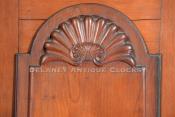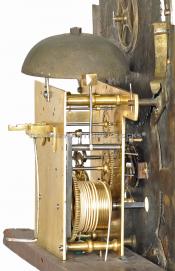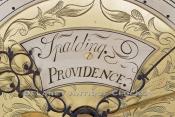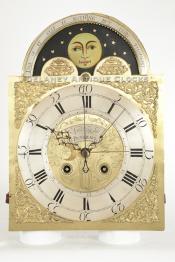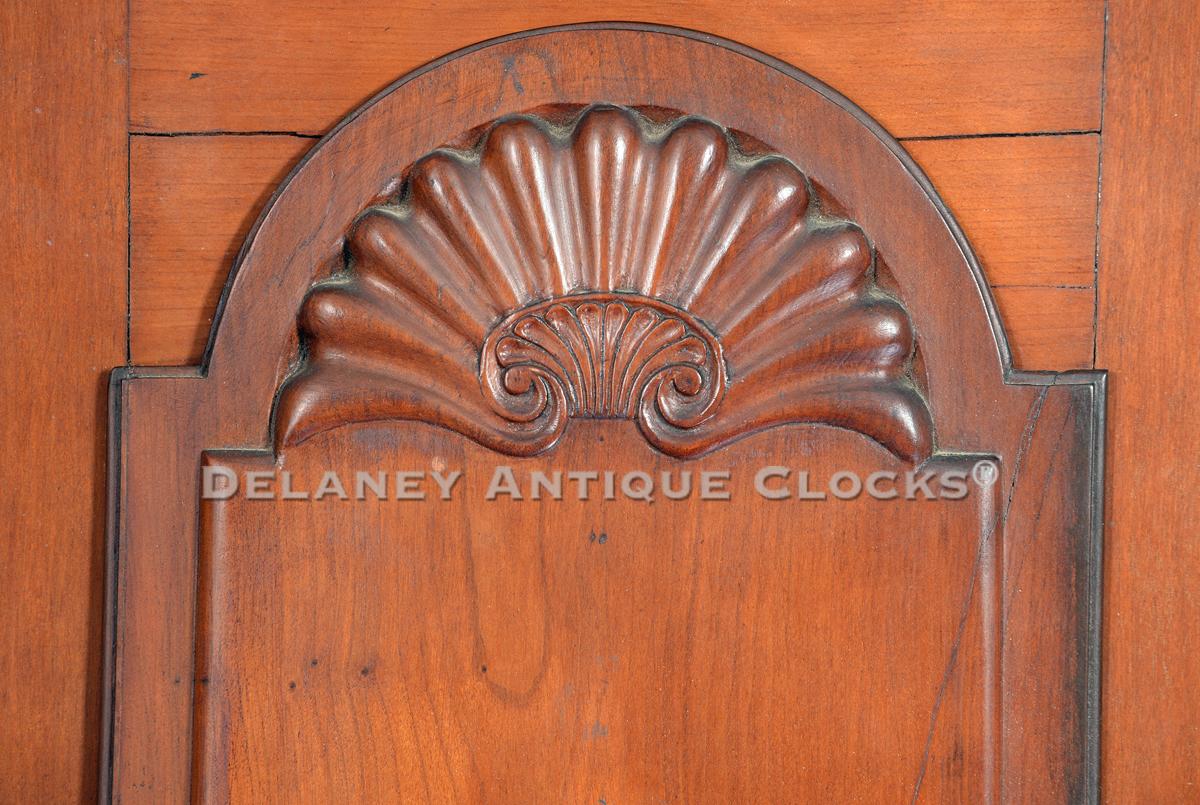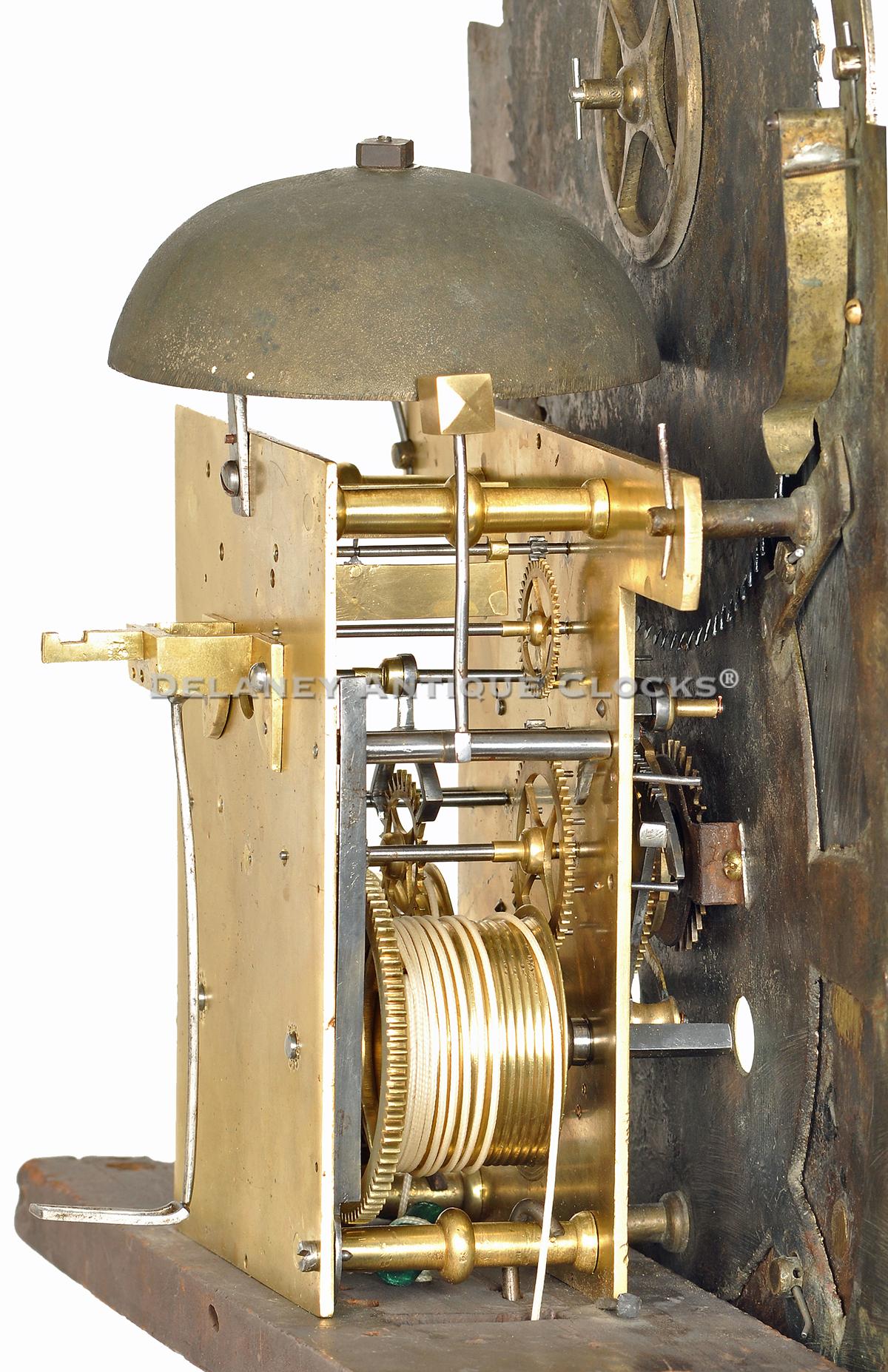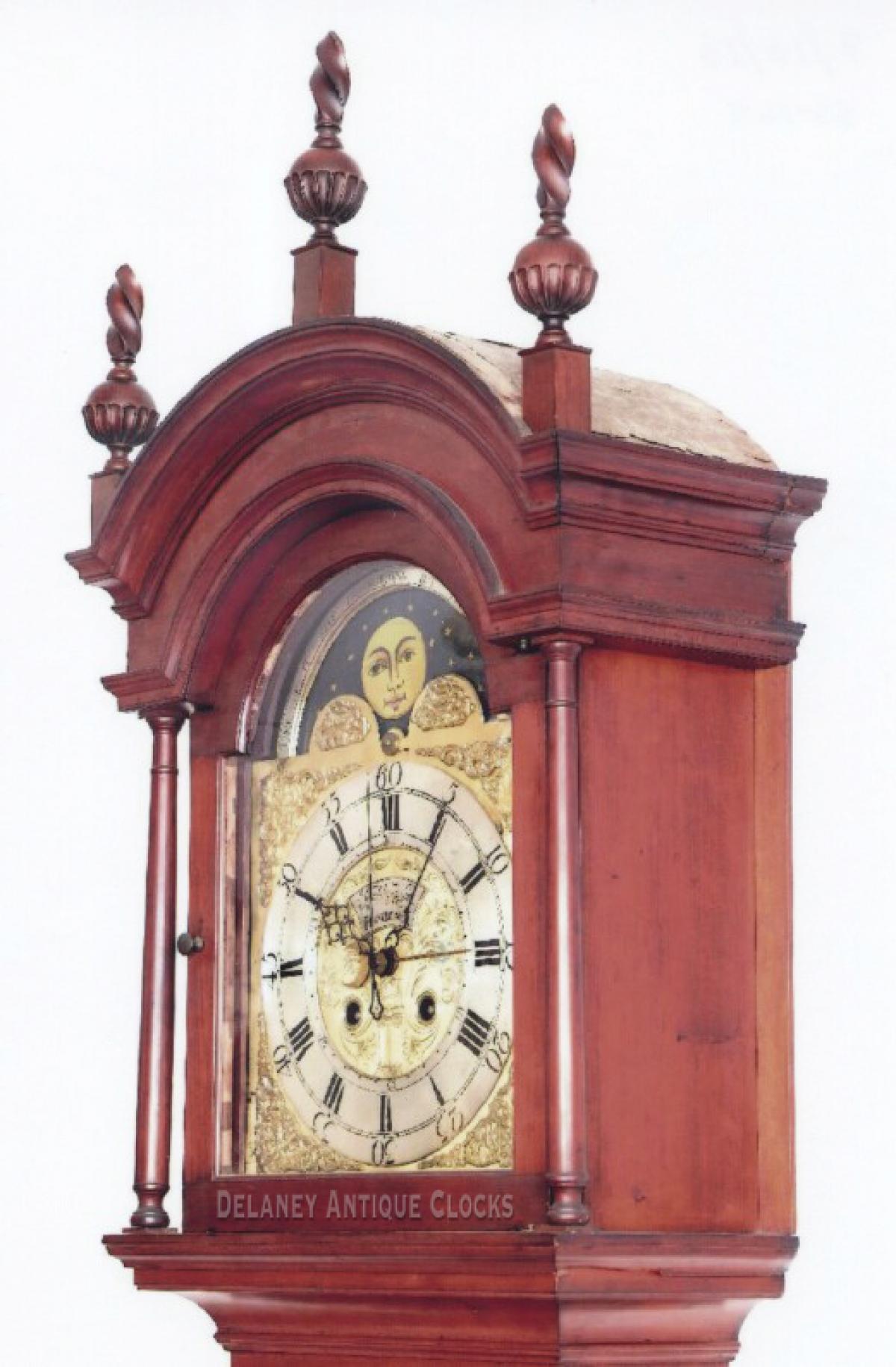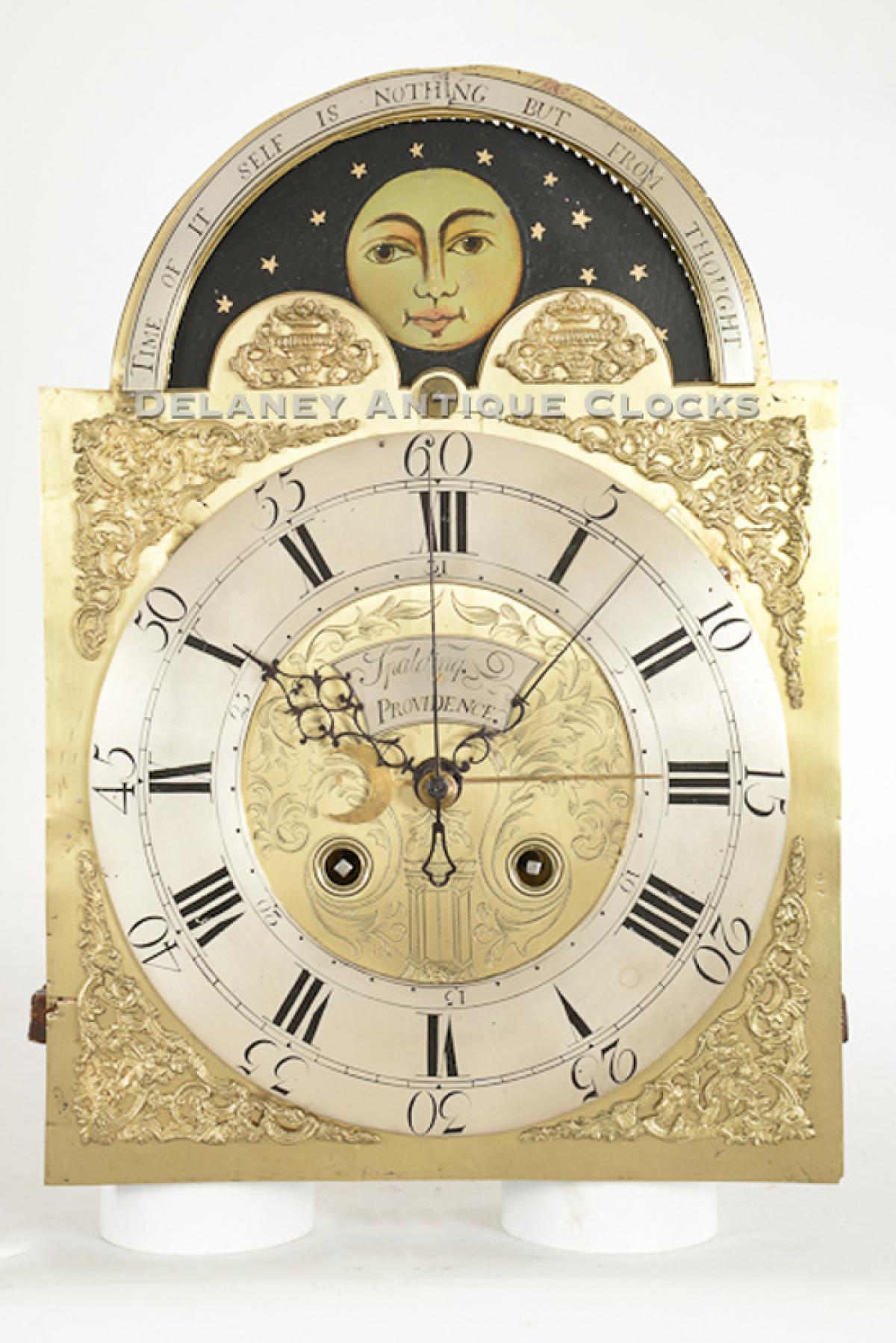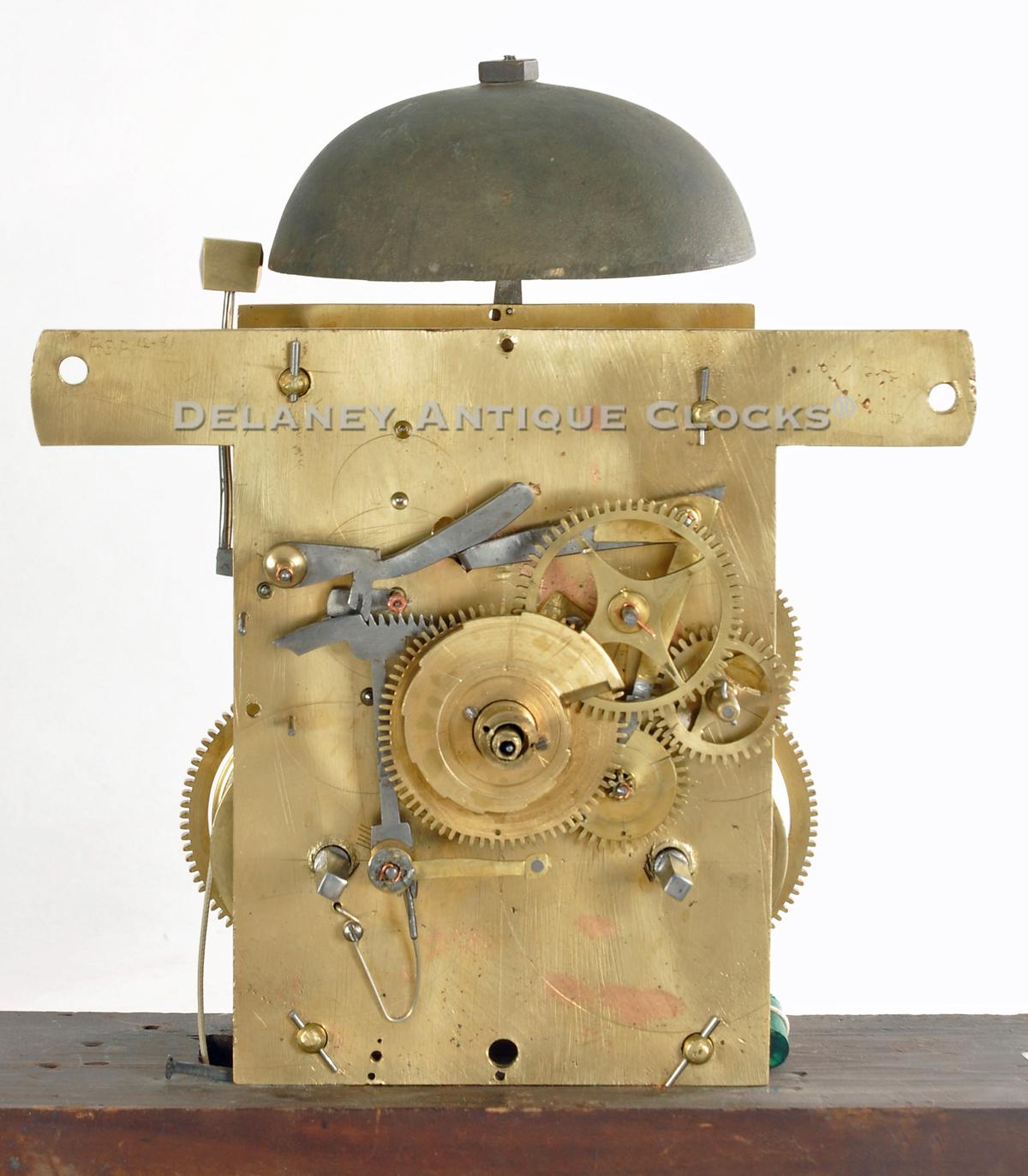Edward Spalding working in Providence, Rhode Island. A tour-de-force of colonial American clockmaking. A block and shell carved tall case clock. SS169
This cherry tall-case clock in an old dry surface exhibits the highest caliber of Newport craftsmanship. The dial is signed by Edward Spalding working in Providence.
This case is supported on four slender ogee bracket feet. An applied panel is fitted on to the base. This is trimmed with a simple molded edge. A ogee shaped molding transitions up through the waist. The waist section is fitted with a convex block-and-shell waist door. The carved shell ornament is a wonderful detail. The quality of the shell carving suggests the output of one of Newport's \/ Providence's leading mid-eighteenth century cabinetmakers and may illustrate the work of one of the first generation or early second-generation Townsend and Goddard shops. The hood, mounted above the cove waist molding is formed with free standing turned columns that flank an arched door. These columns visually support the double break arch pediment. A small arched molding above the door is separated from the larger cove molding above it by an unadorned frieze. Three carved wooden flame and ball shaped finials are mounted on wooden plinths.
The movement or works illustrates the characteristic sophistication of this maker. It is constructed in brass and is good quality. Four turned pillars support the brass framing. The front plate features an unusual shaping. It is formed with wings to accommodate dial feet that are widely set apart. The works are weight driven and designed to run eight days on a full wind. It is a time and strike design having a rack and snail striking system. As a result, it will strike each hour on the hour. This is done on a cast iron bell which is mounted above the movement on a stand. In addition to timekeeping and hourly striking, the mechanism also measures the progress of the moon having a lunar calendar in the arch. A sweep calendar and a sweep seconds hand is mounted from the center arbor. These works are complemented by a particularly elaborate brass dial.
This style of dial, the composite brass dial, generally predates the more common painted dial form. It is composed of a brass base sheet that is decorated with applied brass cast spandrels, an applied chapter ring, an applied name boss, and applied half ring above the arch and skillful engravings. The chapter ring, rectangular name plaque and half arch circle are finished in a silver wash for contrast. The time ring displays the hours in a Roman numeral format. The five minute markers are indicated in each of the hour positions with an Arabic style numeral. The closed minute ring doubles as a second ring also since this clocks displays sweep seconds.. An interior ring which is marked from 1 to 31 signify the calendar days. The date is indicated by the brass hand. The interior section of the time ring is decoratively engraved. One will also find the maker's name and working location "Spalding \/ PROVIDENCE" engraved on an applied plaque in this location. The steel hands are wonderfully made. All four of the hands are mounted from the center of the dial. The seconds hand is a sweep format. In the arch of the dial is the lunar calendar display. This disk is painted. The night time star filled sky is a nice detail. Above this, applied to the arched is a banner that reads, " TIME OF IT SELF IS NOTHING BUT FROM THOUGHT."
This clock stands approximately 8 feet 1 inches tall to the top of the center finial. It is 21 inches wide and 9.5 inches deep.
This clock is inventory number SS-169.
Currently, very little is known about Edward Spalding's early life. His parents were Stephen and Marry (Lawrence) Spalding, who lived in Plainfield, Connecticut, when Edward was born there in 1732. It appears that he moved to Providence at an early age and may have trained as a clockmaker in this city. To whom he served his apprenticeship is not currently known. A clock that he is known to have made while working in Providence is dated 1753. This early date suggests that he made this clock shortly after he finished his indenture. It also confirms that he was one of Providence's earliest clockmakers. In 1757, Edward married Audrey Safford. Together they had three children, including Edward Jr., who was born in 1767. Edward trained under his father as a clockmaker. Edward (I) did a fair amount of advertising in the Providence Gazette during the period of 1766 – 1776. These adverisements prove that he was very involved in clockmaking before the Revolutionary War, where he served as Captain and rose to the rank of Major. After the war, he continued to make clocks. He died in Providence in 1785.
Prior to the American Revolution, very few Clockmakers were working in America. The most notable of which from Rhode Island are the Claggetts from Newport, and together they made what is considered a significant number of clocks for the period. Other Clockmakers like James Wady did not fare so well in business. Their output was much less significant, making Spalding the premier clockmaker of his working period in the region.
Several clocks are currently known. One that descended from the Calder family and is now in the collection of the Museum Fine Arts, Houston-Bayou Bend. A second clock originally belonged to Welcome Arnold (1745-1798), Providence, Rhode Island (see David B. Warren et. al., American Decorative Arts and Paintings in the Bayou Bend Collection, (Houston: Museum of Fine Arts.) Two others are pictured in Timeless. Masterpiece American Brass dial clocks.


